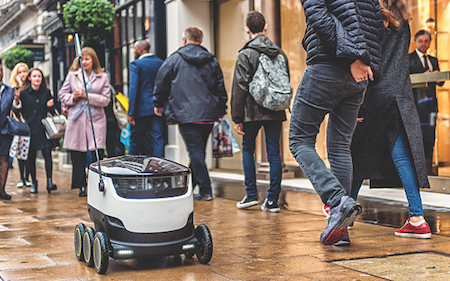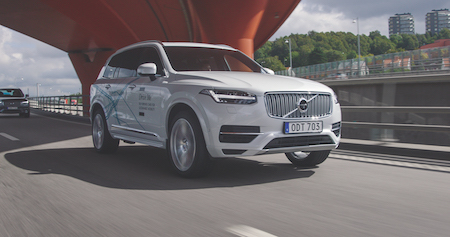Can you give a short potted history of Starship Technologies? Some details of the founders and the timeline of development would be useful.
Starship Technologies was founded by Ahti Heinla and Janus Friis. Both men were part of the founding team of Skype many years ago. They wanted to work together again and were looking for industries that hadn’t been disrupted by technology. Ahti had also been taking part in robotics competitions called the NASA Centennial Challenge. They found that last mile logistics was a huge bottleneck for the transportation industry, largely inefficient and costly. They wanted to solve these problems using self-driving delivery robots. The company is 3 years old, and our robot came out of stealth just 13 months ago. To date we’ve travelled thousands of miles, visited tens of countries and met millions of people. We’re currently doing real deliveries to real customers under our pilot programme.
What are the drivers for growth in robotic delivery systems?
Drivers for growth are down to the current inefficiencies in the last mile industry. Vans and cars congesting roads and polluting cities. Inconvenient delivery for customers and high costs if ordering on-demand delivery. E-commerce is growing by around 10% every year which means more vans and cars and more deliveries. These problems can be solved using self-driving delivery robots. Safe, small, zero emissions devices travelling on sidewalks at 4mph 24/7 on-demand for $1 in the future.
Does London’s geography lend itself more readily to robot delivery? What other cities/countries would fit the pattern?
Starship Robots are testing in over seven cities in Europe and the US at the moment. Robots are best suited to suburban, residential environments. London has many of these areas which are well suited, but there are hundreds of thousands of other areas around the world perfectly suited to robot delivery.

What are your assumptions about the current and future size of the robot delivery market?
The current market size of the delivery robot market is very small. Already we’re seeing companies doing similar things however none of them have been testing on real sidewalks to real customers yet. In the future we will see the market grow exponentially as the economics of robot delivery start making more economic sense. Starship Technologies will be the driving force behind the growth and currently is the most advanced robot delivery company in the world.
What stage are you at in terms of business planning and investment? Turnover, acquisitions, organic growth etc.
We’ve recently received funding of over $17m which will assist us in our development moving forward. We’re currently focusing on our pilot programs and learning from the millions of scenarios that our robots find themselves in.
What about the competition? Amazon, the big logistics businesses.
There are around 6 or 7 other delivery robot companies at the moment, which is a good thing. However, none of these companies have done any significant testing yet.
What type of business has the greatest potential for growth? Retail, Agricultural, Medical?
We’re focusing on three industries: groceries, parcels and food.
What is the rationale behind the latest fundraising and the relationship with Mercedes/Daimler?
The fundraising will assist us with our research and development whilst further advancing our pilot programs across Europe and the US. Mercedes-Benz Vans are a fantastic partner to have, as they share our vision of last mile logistics. We’re working on a project with them at the moment called Robovan.
What does the future hold for robot delivery in general?
Robot delivery will see significant growth in the next 5 years as technology, social engagement and education on robotic delivery develops.
Where will Starship Technologies be in 5 years’ time?
In 5 years time, Starship will be making thousands of deliveries everyday in a multitude of cities around the world. It will become a common sight to see a delivery robot on the sidewalk.


.jpg)
.jpg)
.jpg)

.jpg)

.jpg)

.jpg)
